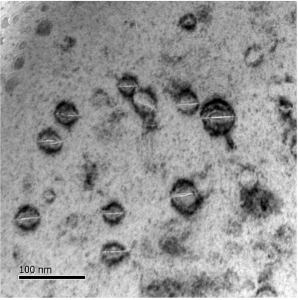New nuclear reactor technologies are attractive to help reduce carbon dioxide emissions whilst also increasing safety, efficiency and reduce waste production. However, many of these novel technologies will require materials that can operate under much harsher conditions than current ones – experiencing higher temperatures and more severe radiation damage environments.
ABOUT THE COLLABORATION
The UK governments energy security strategy aims to deliver 24 gigawatts of nuclear power production by 2050, making up 25% of our projected energy production in the move towards net-zero. This will include the deployment of advanced nuclear technologies such as higher temperature reactors and small modular reactors. However, the design for some of these new nuclear power plants require the development of novel nuclear fuel and cladding materials to operate in the harsher environments of these systems which will operate at higher temperature and radiation damage than previous systems. These materials also offer the opportunity to improve safety and efficiency whilst helping reduce the burden of nuclear waste.
This project on new fuels for advanced technologies (NuFAN) at the University of Manchester will assess the current candidates for the uranium bearing fuel and cladding materials – utilising Royce facilities and expertise in the Nuclear Fuels group to manufacture and characterise the materials before simulating their radiation damage behaviour under high temperature ion irradiation at the Dalton Cumbria Facility. It will then examine the effects of the radiation damage on the materials underlying atomic structure and thermal properties using world leading facilities in Royce, the University of Oxford and MIT – allowing the team to develop a model of how the defects produced affect the materials properties from the atomic to bulk scale.
Furthermore, the project will directly feed into industry and Royce partners at the National Nuclear Laboratory to develop the technology readiness levels of the difference materials and help assess which candidates progress onto scale up and real in-reactors tests. The aims of this are to support the UK in its advancement and deployment of advanced nuclear technologies to achieve Net-Zero.

Fig.1:
Transmission electron micrograph of SiC, an advance nuclear fuel cladding material, following helium ion irradiation at 1000°C showing the formation of ~100 nm long helium platelets that may lead to micro-crack formation
Project Collaborators:
University of Oxford, National Nuclear Laboratory, Bangor University, MIT, SCK Centre, University of Leeds
"This work will develop next generation nuclear fuel materials for deployment in advanced nuclear power stations which is key in the fight against climate change – the utilisation of state-of-the-art facilities and global expertise in nuclear fuel performance and materials characterisation will help yield powerful, un-paralleled results"
Dr Robert Harrison
Senior Research Fellow | Department of Mechanical, Aerospace and Civil Engineering/Dalton Nuclear Institutes/Henry Royce Institute



